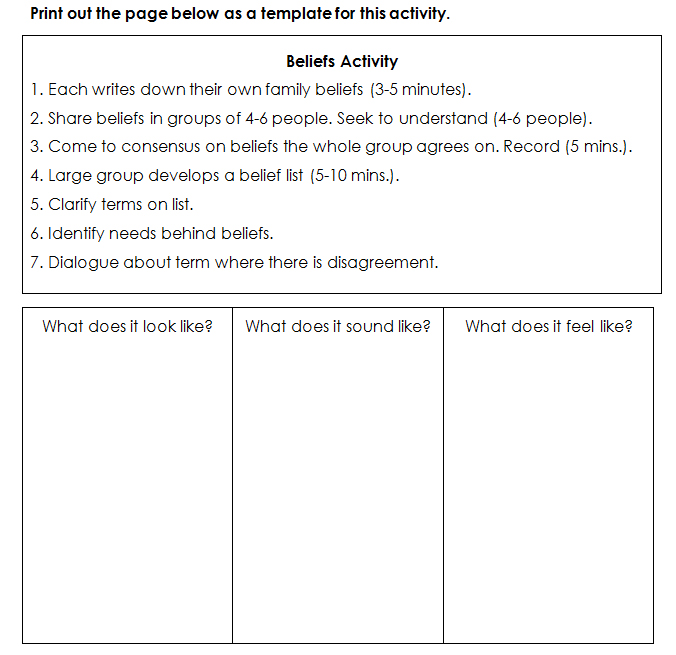In Part 2 of this learning unit, three activities help you apply some of the concepts from the previous section. The templates for the activities can be found in the Appendix section at the end of the unit.
Circle of Courage: Our Families
Objective: To create a community circle of stories collected from the families in your Head Start site. As part of a family night, ask parents to share meaningful stories that tell of experiences and important life lessons about caring for children or one another. Record or write out these stories on a piece of paper. Print them out later on a computer. This family literacy activity will foster inclusion and build community.
- Introduce the activity through a newsletter or message sent home with children. Let them know that you will ask them to share such a story.
- Model the activity with a mini poster of your experience/lesson in a place where parents, (other parents), caregivers, and community can view it.
- The stories can be represented in pictures, words, or artifacts.
- Arrange the family stories in the shape of a circle onto a bulletin board.
- Ask families and parents to identify the component of their Circle where the lesson or experience was focused: Belonging, Generosity, Independence, or Mastery.
- Incorporate the language and colours of the Circle of Courage to show an inclusive community (black-Belonging; white-Independence; red-Mastery, yellow-Generosity).
- The completed activity can be shared at a PAC meeting where the goals of this learning unit can be shared.
- Share these life lessons with the children in the Head Start site. Use the stories as an invitation to incorporate ideas introduced in earlier learning units:
o Photo picture books
o Oral story telling
o Felt board stories
o Elder visits
o Community building
